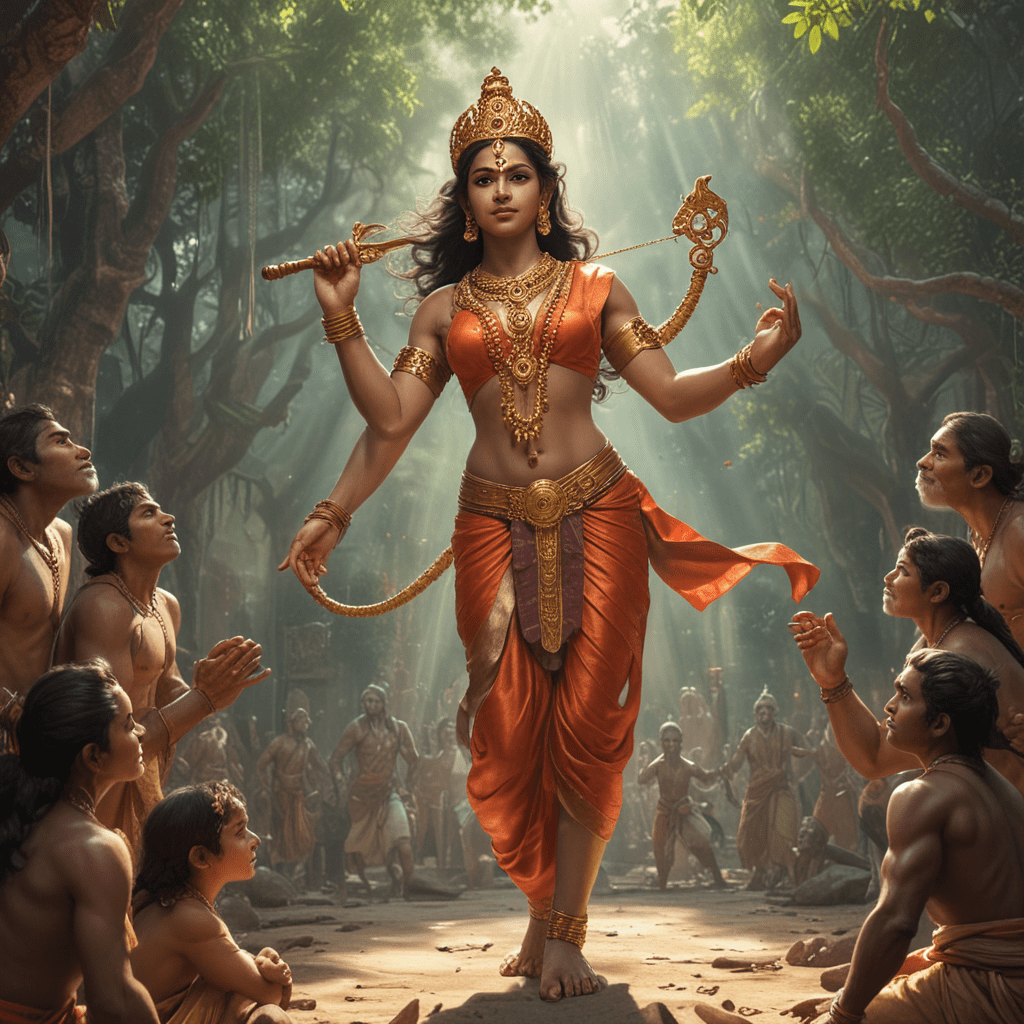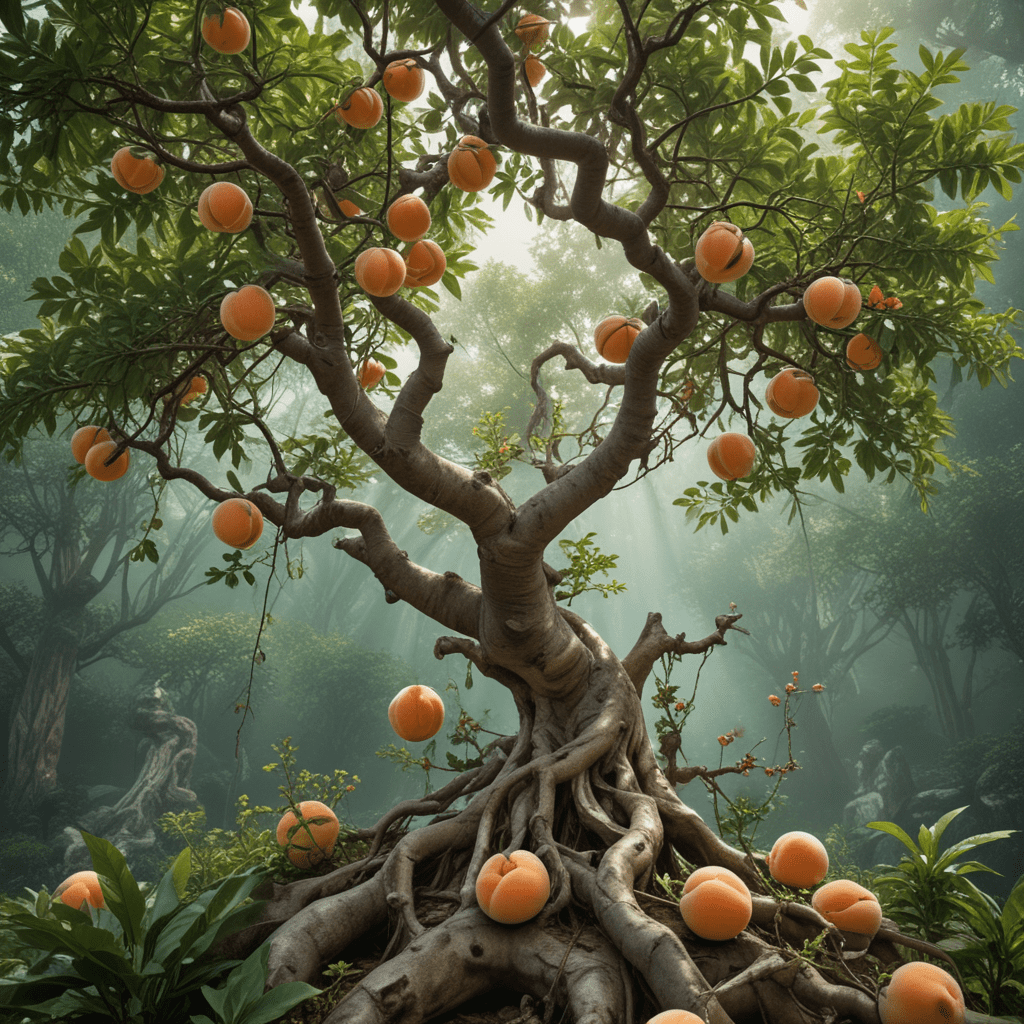Baltic Mythology: The Concept of Duality and Balance
Introduction: The Enigmatic World of Baltic Mythology
The Baltic region, with its rich history and diverse cultures, holds an intriguing realm of mythology. Baltic mythology, deeply intertwined with nature, gods, and the everyday lives of the people, offers a captivating glimpse into the ancient world's beliefs and values. Among these beliefs, the concept of duality and balance takes center stage, shaping the very foundations of the universe and guiding human actions.
The Cosmic Dance: A World Built on Opposing Forces
Baltic mythology envisions a world built upon opposing forces, a cosmic dance of light and darkness, order and chaos, creation and destruction. This fundamental principle of duality permeates every aspect of their beliefs. The universe is not a singular entity but rather a complex interplay of contrasting forces, each essential to maintaining equilibrium. This concept of balance is not simply a philosophical notion but a tangible force that governs the everyday lives of the people.
Dievs and Laima: The Divine Guardians of Order and Fate
At the heart of this cosmic balance stand the deities, particularly Dievs, the supreme god, and Laima, the goddess of fate. Dievs embodies the principles of creation, order, and justice, representing the force that strives to maintain harmony. In contrast, Laima, the weaver of destiny, embodies both potential and inevitability, her role encompassing the dark and unpredictable aspects of life. Together, they represent the delicate dance between order and fate, ensuring the universe remains in equilibrium.
The Importance of Harmony: Maintaining Balance in the Universe
The concept of balance is deeply ingrained in the Baltic worldview. They believe that maintaining harmony in the universe and in their own lives is paramount. Disrupting this balance can lead to chaos, misfortune, and ultimately, destruction. This belief is reflected in their daily rituals, their interaction with nature, and their understanding of human relationships.
The Dark and the Light: Exploring the Dualistic Nature of Gods and Goddesses
The Baltic pantheon is an embodiment of duality. Many gods and goddesses exhibit contrasting aspects, reflecting the inherent duality of the universe. Each deity, whether benevolent or malevolent, embodies a particular force, contributing to the overall balance. This duality extends to the natural world, with forces like sunlight and darkness, fire and water, representing the constant interplay between opposing forces.
Balancing the Elements: The Interplay of Nature and Human Life
Baltic mythology recognizes the profound connection between humanity and the natural world. The elements – earth, water, fire, and air – are seen as living entities, each possessing its own spirit and power. The balance of these elements is crucial for the well-being of both humans and the natural world. A harmonious relationship with nature is essential for prosperity and a prosperous life.
For example, the earth provides sustenance, but it also has the power to destroy. Water is essential for life, but floods can cause devastation. Fire offers warmth and light but can also consume everything in its path. Air is vital for breathing but can also bring storms and destructive winds. The Baltic people understood that respecting the power of these elements and living in balance with them was crucial for their survival.
Rituals and Offerings: Seeking Harmony and Avoiding Discord
To maintain the cosmic balance, the Baltic people performed various rituals and offered sacrifices to the gods. These practices aimed to appease the deities, seek their favor, and ensure protection from harm. They believed that by respecting the gods and the natural world, they could avoid the wrath of the powers that governed their lives.
Rituals often involved offerings of food, drink, and precious items, symbolizing the people's gratitude and their desire for a good harvest, protection from illness, or success in hunting. Sacrifices, sometimes involving animals or even humans, were considered a way to appease powerful deities and ensure their continued favor. These acts were not seen as acts of cruelty but as a necessary means of maintaining harmony in the universe.
Folklore Tales: Reflecting the Importance of Duality and Balance
Baltic folklore is rich with tales that illustrate the importance of duality and balance. These stories often feature characters representing contrasting forces, such as the sun and the moon, good and evil, or light and darkness. The outcomes of these tales often demonstrate the consequences of disrupting the natural order or ignoring the balance of opposing forces.
For example, tales about the sun god Saule and the moon goddess Mena, who symbolize the light and dark aspects of the day, underscore the importance of both forces in creating a harmonious universe. Stories about mythical creatures like the Laima, the goddess of fate, highlight the unpredictable nature of life and the need to accept both good and bad fortune. Ultimately, these tales serve as reminders of the delicate balance that governs the world and the importance of respecting both the light and the dark, the positive and the negative aspects of life.
The Enduring Legacy of Duality: Influence on Modern Baltic Culture
The concept of duality and balance, deeply embedded in Baltic mythology, continues to influence modern Baltic culture. This belief system has shaped their values, their folklore, and their traditions. It is reflected in their art, music, and literature, and it continues to inform their understanding of the world around them.
The emphasis on balance and harmony in the universe can be seen in the Baltic people’s respect for nature, their appreciation for the cycle of life and death, and their belief in the importance of community and shared responsibility. They recognize that while life is filled with both joy and sorrow, light and darkness, the key to a fulfilling life lies in finding the balance between these opposing forces.
Conclusion: Exploring the Timeless Relevance of Balance in Mythology
Baltic mythology, with its emphasis on duality and balance, offers valuable insights into the ancient world's worldview. It reminds us of the importance of respecting the natural world, acknowledging the inherent duality of existence, and striving for harmony in our lives. The enduring relevance of these principles in modern times suggests that the quest for balance is a timeless human pursuit, one that transcends cultures and generations.
FAQ
What are some common Baltic deities that embody duality?
Many Baltic deities embody duality. For example, Dievs, the supreme god, represents both creation and destruction, order and chaos. Laima, the goddess of fate, embodies both potential and inevitability, representing the dark and unpredictable aspects of life. Other deities, such as the sun god Saule and the moon goddess Mena, embody light and darkness, respectively.
How does the concept of duality and balance influence modern Baltic culture?
The concept of duality and balance in Baltic mythology continues to influence modern Baltic culture in many ways. For example, it is reflected in their respect for nature, their appreciation for the interconnectedness of all things, and their belief in the importance of community and shared responsibility. It also shapes their attitudes towards the cyclical nature of life and the acceptance of both good and bad fortune.
Are there any modern examples of Baltic folklore that reflect the concept of duality and balance?
Modern Baltic folklore continues to incorporate the concept of duality and balance in many ways. For example, traditional Balts songs and folk dances often feature contrasting themes of light and dark, joy and sorrow, or good and evil. Modern Baltic literature, film, and music also explore these themes, reflecting the enduring influence of these ancient beliefs on contemporary Baltic culture.
What are some of the rituals and practices used by the Baltic people to maintain balance?
The Baltic people engaged in various rituals and practices to maintain balance. They offered sacrifices to the gods, often involving animals or food, to appease them and ensure their favor. They also performed rituals related to the seasons, such as celebrating the summer solstice and the winter solstice, to mark the cyclical nature of life and acknowledge the importance of both light and darkness.
How does the concept of duality and balance relate to the idea of “yin and yang” in Chinese philosophy?
Both the concept of duality and balance in Baltic mythology and the idea of "yin and yang" in Chinese philosophy share a common theme, which is the recognition of the interconnectedness and interdependence of opposing forces in the universe. Both systems emphasize that these forces are not separate entities but rather two sides of the same coin, and that their interaction is essential for creating harmony and maintaining balance.




